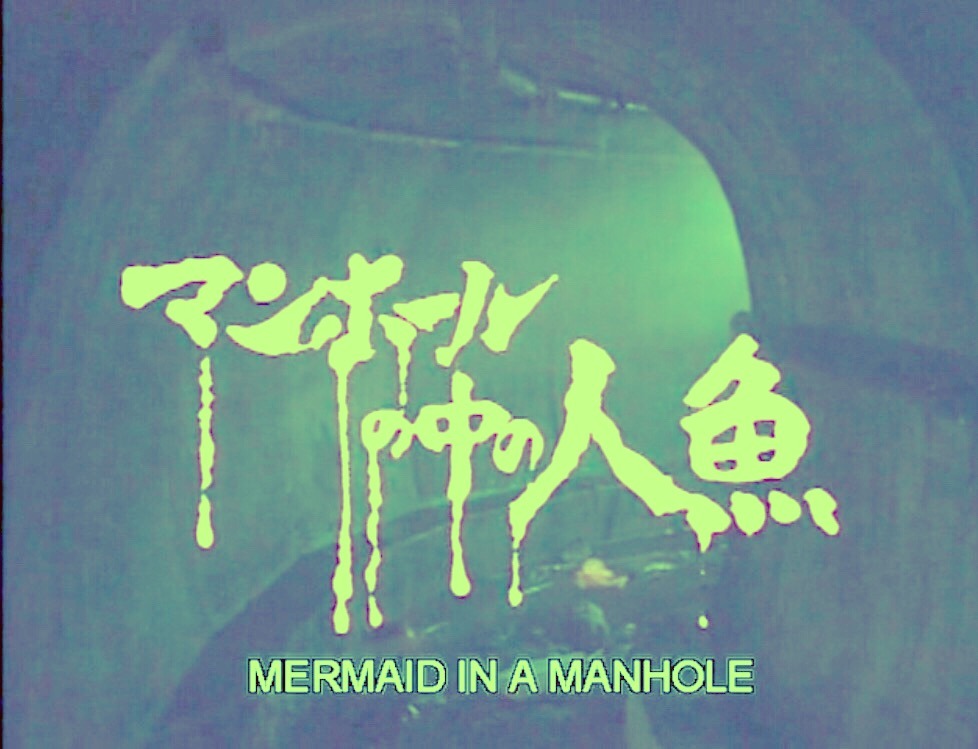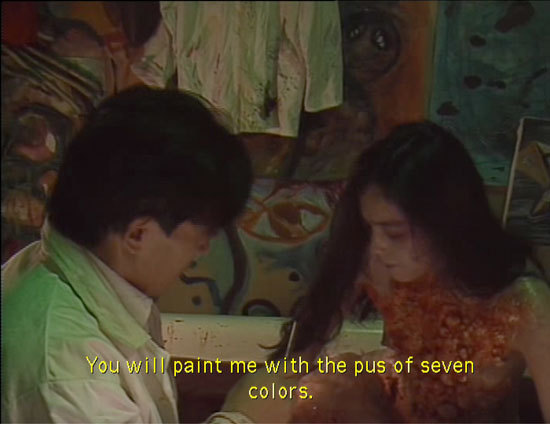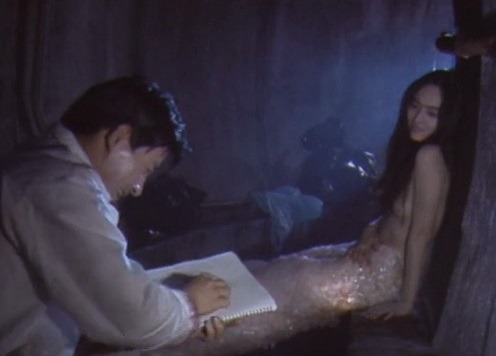Steven Cline
Guinea Pig 6: Mermaid in a Manhole Review
“Everything is hidden in the darkness.”

Like a surrealist poem, the film begins with a series of close-ups on seemingly disconnected objects in an unknown sewer tunnel. A clock without hands. A dead dog. A red ball. A baseball glove. A torn kabuki poster. A child’s toy. A mass of unknown flesh, swarming with worms. And a dead baby, with its pale little face gazing upwards. This long sequence begs for interpretation. A clock without hands —a place outside time? A dark place, filled with childhood memories and primeval horrors…? Bingo. It’s the Unconscious, of course.
Our story centers around a strange artist who wanders the sewers near his home, finding there the subjects for all his paintings. Like the surrealist, he explores, interrogates, and reinterprets the reality which surrounds him. He peaks beyond its veil, and transmutates it. He is always seen by the neighbors leaving his house “with a sketchbook in hand”. A plein air painter, then? A sunday painter? Yes, he is. And yes, we are. We surrealists. But the plein air which we inhabit is the surr-air of the Real—not of the everyday appearance. (which, of course, is where most painterly nitwits stubbornly inhabit) This local sewer, with its hallways bathed in blue light, is this artist’s “secret place”. The place where all lost treasures shall be found. Many years ago, he tells us, there had once been a river on this very spot, where he often played as a child. A place full of “fish, friends, dragonflies”, long since disappeared. The river now submerged, repressed by capitalism’s unconfined growth. O lucky day! On this particular excursion to the sewer, our artist-protagonist has a chance encounter with a (mostly) living mermaid. A creature that he’d met before in childhood. The fading memory, returned. She is shimmering, wounded, grotesque, beautiful. Marvelous-monstrous. The film cuts away from her, showing us once again the decrepit old clock—the one without any hands.

Later, he has a pure-white bathtub delivered, places her naked, decaying body inside it, and begins to lovingly paint her. We dream along with him now, spinning with him in soft waves of death & eros. With Weirdwoman as his guide, as his decomposing nude. Of course, this figure of mermaid itself an inbetweener too—a liminal creature—with one flipper in the world of humans, and one flipper in the world of the spirits. One that is wet, and one that is dry. The unconscious, promiscuously mixing with the conscious. A phantom in the daylight. Several leering masks cover the artist’s apartment, too. Masks of a boundary-crossing shaman?
Cannibal goddess, she asks the artist to feed her with dead fish, and happily he obliges. The leftovers are thrown away, tossed out in the street. Curious neighbors soon collect, observing the black trash bags which seem to bleed—and fish heads which seem to stare. “You can judge people by their trash”, mutters one horrified bystander. In other words—We see your dark underthings leaking out, mr. artist! So put a lid on it eh? We don’t want no “return of the repressed” in this neighborhood!
Our provocative mermaid is covered by tumors throughout the film—her body’s unruly unconscious, manifesting. These are special tumors, of course, ones which bleed out “a pus of many colors”. Reds blues purples pinks & greens. Naturally, the perfect pus with which to paint…
A long parade of grotesqueries pass by. And then the film bursts suddenly out onto the fertile terrain of Myth. Mermaid begins a difficult birth. A thousand green and black and blue worms drop out from her ripening pustules. Yes, it’s a very strange brood. And then, taking a page from Charlotte’s Web, the mermaid shivers, and then dies. After death, she asks the artist to cut her up into little pieces. Once again, he obliges. And now she’s Osiris, and now she’s Tiamat, and now she’ s a dismembered old god. A flesh seed, for the creation of new worlds… The final sequence reveals to us that our artist-protagonist was schizophrenic, and that this dead mermaid was actually just his very normal human wife. He has brutally killed her, and cut her up. And yet—on the police’s evidence table there also sits one solitary, glittering fish scale. They’d found it in the bathtub, they say, and cannot match it up to any known species. No “either/or” ending for us then, friends. An ending of “both/and”. Truly, my favorite kind.
Final Rating: 5 floundering wormsnakes out of 5. A masterpiece of tumoric cinema.

